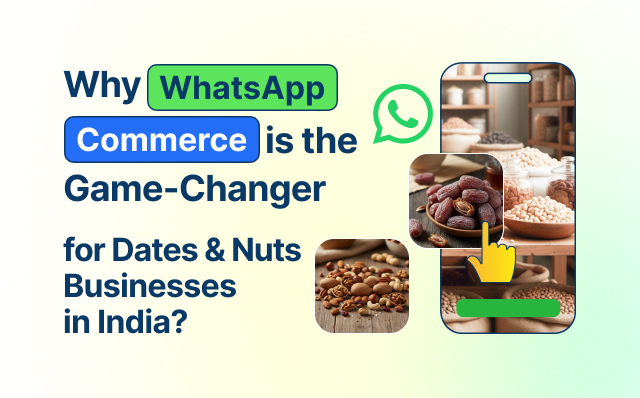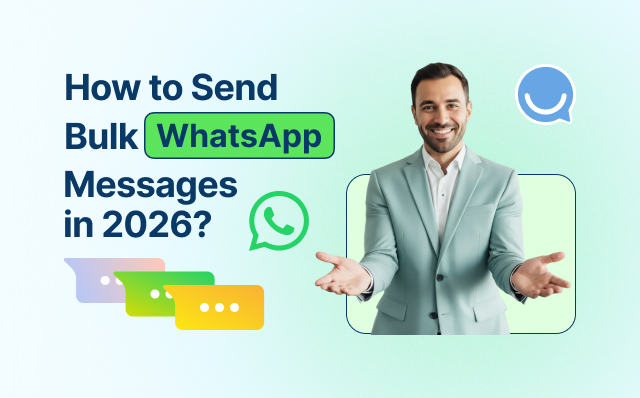Chatbots have been regarded as the latest revolution in the customer care industry over the past few years, but it seems there is a new contender for that spot – conversational AI. Although the terms chatbot and conversational AI are used interchangeably, They are, in fact, not the same thing. In this article, I’ll attempt to differentiate between both of these to understand what’s what. However, before we begin to differentiate between them, we first need to understand these two in-depth.
Chatbot
What exactly is a chatbot?
Well, a chatbot is software that mimics a human conversation via text. This was primarily implemented to make customer interaction more engaging, thus improving consumer satisfaction. Chatbots can work either on predefined conversational workflows or by utilizing natural language processing methods (NLP).
The best part of a chatbot is that it can help reduce the workload of customer service agents by answering basic and frequently asked questions. Chatbots can also function all day long, meaning they can neither become tired nor take a break.
What are the different kinds of chatbots?
Chatbots can typically be categorized into two:
1) Rule-based chatbots: These follow a particular order while answering. If a client asks a specific question, ‘X,’ the bot will respond with a specific answer, ‘Y.’ These chatbots mainly follow a predefined pattern and often cannot correctly answer questions not listed in the decision tree. These kinds of chatbots can also not use past conversations to give quicker and better responses.
2) AI customer service chatbots: Also known as contextual chatbots or virtual agents, these kinds of chatbots often do not work like regular chatbots because they use natural language processing and machine learning to respond. With an ability to absorb information and evolve from past conversations, these chatbots can learn and improve over time, unlike rule-based chatbots.
Although one chatbot is better than the other, It should go without saying that chatbots, in general, have significantly impacted the customer service industries and helped eliminate a tremendous amount of workload.
Conversational AI
What is conversational AI?
Conversational AI, in the simplest definition, can be termed as a much more advanced version of a chatbot. They can respond in a human-like way but also in numerous ways. A conversational AI helps identify deep learning algorithms from an extensive data set to determine what the customer wants and respond accordingly.
Are chatbots and conversational AI similar?
Well, look at it this way, a chatbot can’t always be a conversational AI but can only be termed as a kind of conversational AI. Regular chatbots, like rule based chatbots, often work on the bases of predefined responses that will be triggered based on keywords or language identifiers. Both AI and Chatbots serve the same purpose – to provide reasonable customer satisfaction. AI is much more convincing that a rule based chatbot because it can mimic human interaction very well. This, in turn, leads to better customer engagement and also aids in easing the burden on the customer service department. Both of these tools can be used in communicating with customers via the internet, mobile, messaging, email, and sms.
What makes a conversational AI different from a Chatbot?
A vast difference lies in the fact that a chatbot only has a limited range of responses, and when asked something, they can’t answer; most chatbots only have a default option of answering with ‘Did not understand.’
When looking deeply, we can find the following differences between them both:
- Natural Language Processing: The language processing differs for both software as chatbots often use keyword-based tech that often triggers a response based on a specific keyword received as input. Conversational AI does not need keywords to trigger a response; it can independently analyze the input and reply.
- Navigation: Chatbots navigate through the means of buttons or options that we enter as inputs. Every correct input will provide us with a list of options or buttons to help us continue the conversation. This is often considered a drawback of the chatbot as it limits our response significantly, unlike conversational AI, which does not limit responses. Conversational AI has more content-driven and dynamic navigation.
- Integration: Chatbots are only able to offer limited support because of their limiting understanding model, but conversational AI, on the other hand, has greater 3rd party integration possibilities when compared to a chatbot.
- Hierarchy: Conversational AI has a multi-level intent hierarchy. However, for a regular chatbot, hierarchy depends on IF/Then model meaning that ‘If’ a user inputs something, ‘Then’ the chatbot replies accordingly.
- Self Improvement: unfortunately, chatbots have no ability to adapt or evolve over time like conversational AI. Conversational AI can effectively become more accurate and intelligent over time as it can learn from past conversations.
- Scalability: The scalability offered by the chatbot is much more limited when compared to conversational AI. Conversational AI has unlimited scalability where, as a chatbot only has limited improvement capacity.
Conclusion
Although chatbots used to be the face of customer service innovation, AI has recently dominated the industry. AI comes loaded with features like Privacy & security compliance, Omnichannel, User authentication, and Voice, unavailable in regular chatbots. Although chatbots are affordable and widely used worldwide right now, it is evident that AI will entirely replace chatbots.


